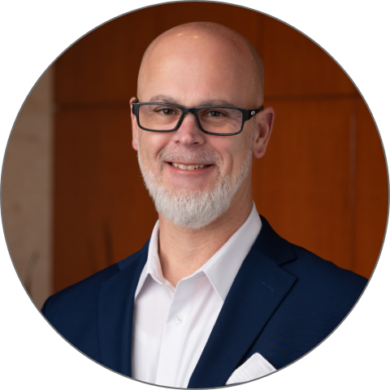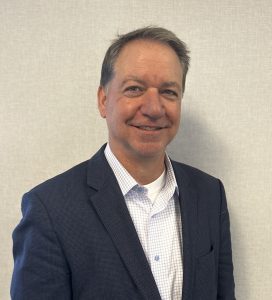 Artificial Intelligence is driving investments in infrastructure of all types, although its direct impact is felt the most with data centers. But all these new facilities need fiber connectivity, and the high fiber counts and extra diversity hyperscalers were looking for are now just table stakes. FiberLight is one of the regional fiber specialists looking to meet the next wave of demand. With us today to talk about FiberLight’s expansion plans and viewpoint on growing demand for fiber from AI is CEO Bill Major. We talked to Bill a year ago, but it has certainly seemed like a particularly long year.
Artificial Intelligence is driving investments in infrastructure of all types, although its direct impact is felt the most with data centers. But all these new facilities need fiber connectivity, and the high fiber counts and extra diversity hyperscalers were looking for are now just table stakes. FiberLight is one of the regional fiber specialists looking to meet the next wave of demand. With us today to talk about FiberLight’s expansion plans and viewpoint on growing demand for fiber from AI is CEO Bill Major. We talked to Bill a year ago, but it has certainly seemed like a particularly long year.
TR: When we last spoke, you suggested that BEAD projects would lead to consolidation. How have things played out in this new environment?
BM: The consolidation is occurring, for example T-Mobile’s JV with EQT for Lumos and the follow-up with Metronet. But I’m not sure anybody knows where we’re headed when it comes to BEAD. Everything has been delayed, and the new administration is now talking about shifting the dollars to wireless/satellite. It should be an interesting period. I personally believe there still will be some allocations, but as I have talked to more and more investment bankers, etc., it appears we may be at an inflection point. They believe there’s enough money in fiber-to-the-home such that maybe it’s not as attractive as it was in the prior 36 months or so. There had been a cooling-off period on enterprise fiber, but now that seems like it’s starting to become in vogue all over again, in part thanks to AI.
TR: In what ways is AI shifting interest toward enterprise fiber?
BM: The market is after every data center that they can get their hands on right now. The current backlog of data centers for the next three years is already committed. New operators are popping up. Real estate companies are coming in, and recently we had a Bitcoin mining company here in Texas repurpose their space and power. When DeepSeek came out and said they could do AI with smaller chips and less compute, all that did is further emboldened the web scalers to lean in even more. We are seeing demand for large fiber counts and duct systems. It’s definitely creating more demand, and for us it comes down to having the discipline to align which deals we go after right now. There are so many, we could end up putting working capital on a project that may be adjacent to the markets we’re trying to get to in our expansion. But then we might not have the working capital to go after that next opportunity that’s ideal for us. Our funnel is full right now to the point where we’re being very selective to making sure we’re doing the right things.
TR: Are you seeing that demand from within your current footprint as opposed to new markets?
BM: Yes, it is. In the Ashburn area, everything’s moving south — into Prince William County and down towards Richmond. In Texas, we are seeing that which I never thought I would –requests out to Midland and Odessa. That’s where there’s available land, power, and water, so there is now tremendous demand from the web-scalers for the far west side of Texas. And we already have fiber built there — not only large fiber cables but also additional ducts. I wish we could have planned for this AI boom 10 years ago, because we would have definitely put in additional ducts. We’re seeing more and more demand south of Dallas in Red Oak, and I recently asked my team to start designing new network that would address all the new data centers that are going in there. And we are going to continue adding density out west.
TR: Do you see opportunities outside your own footprint that look interesting?
BM: Expanding on the east coast from Virginia down through the Carolinas is interesting. And then there’s opportunity with the web-scalers right now, where we’ve designed, budgeted, and quoted opportunities from Chicago through Columbus to Ashburn. There are some really unique routes. If you look at the industry, it’s been years since anybody’s built longhaul. But AI demand is driving things, and Zayo announced some weeks ago an investment of $5 billion in some unique additional long haul. We’re going to be doing the same thing.
TR: What types of AI applications are you seeing your customers working on?
BM: If you look at the AI evolution, I think everything right now is perception AI and language learning models. I don’t see things pivoting yet to generative or agentic. For things like full physical AI, we are like 30 years out. We’re still in the infancy. But to be honest, I don’t care what they’re doing as long as they keep buying more fiber and putting in more data centers.
TR: AI demand is evolving rapidly, how are you planning your investments to take advantage?
BM: I think right now it’s probably a three to five-year horizon that we would take advantage of. During the budget season, we build out our budget for next year but we build out the fiber for 25 years. But we can’t budget for this level of AI demand for 10 years from now., You’ve got to take advantage of the tailwinds that are here today, and that is probably a three to five-year horizon. Eventually, they’re not going to need any more data centers for compute, and it will become how to get closer to the edge. Then as quantum comes out, that may be where your infill comes in, and you add density to your network.
TR: What does the M&A marketplace look like right now for infrastructure?
BM: I can’t believe the number of potential the deals that are coming to market. In the last 30 days, there have been four in the State of Texas alone. These aren’t the regional or larger multi-billion dollar companies, they are more unique assets and accretive or adjacent markets that people are now realizing the value of. And that’s why I feel like the shift of enterprise becoming in vogue again is here. I didn’t expect these smaller opportunities to pop up like they have. There is not a single provider that can be everything to everyone. If you’ve got some unique assets in an area that offer a diverse route, a tertiary route, that’s what the data centers are demanding. They’re not looking for a single route. They’re looking for a second and a third. So the boutique metro builders are now realizing the inherent value of the assets they’ve constructed.
The roll-up is happening, and I think it accelerates through 2025. But I will say there’s an inflated view on how valuable some of these assets are. We will be patient with our dry powder and make sure that it’s the right deal. We not going to pay out for it. If we can build it for the same or less, we will definitely do so.
TR: With the depth FiberLight has in its markets, do you ever consider opportunities in the FTTH space?
BM: I am never getting into fiber-to-the-home route. I can’t do it. I can’t get my head wrapped around the economics. I know how expensive it is to construct now, and I don’t know how you truly realize that ROI on $70 or maybe $90 per home while competing not only with the LEC, ILEC, cable MSO, but any other fiber-to-the-home providers that are already established in that area. I love being an enabler for FTTH. I just am not participating. I will give them a middle mile and a first mile, but I’ll never be a last mile. To do it we would have to scale up our NOC and create a customer service center. That’s additional SG&A that I’d rather put to use building fiber for the hyperscalers and true enterprise blue chip customers.
TR: In what ways have you been investing in your operations to compete in this new AI-driven environment?
BM: When you think of the ebbs and flows of telecom in general, this is probably one of the most unique times. Our peers and others are strapped with high debt, aging sponsors, and they’re kind of like zombies right now. They exist, but they’re not expanding. But even though this is a 20+ year old company, it’s like we’re brand new. We have spent two years transforming every aspect of the business. We’re currently in the process of moving our headquarters from Alpharetta here to Plano. We continue to add staff, going from roughly 35 daily in-house workers to 72 here now. I recently added our new CFO, Shane Ward, who came from Lumos. And then to invest in our network, I brought my former CTO, Chuck girt from Everstream. It has been an interesting but extremely successful year. For sales, we hit budget for both top and bottom line with about 160% year-over-year growth in bookings. We’re hitting on all the key KPIs that I set up in 2023.
TR: What challenges do you think lie ahead for the industry as a whole?
BM: Scale is a big challenge. If you look at the industry as a whole, most companies don’t have the access to the working capital to overbuild or expand at the pace that we can. I think the winners are going to be those who have access to the working capital to get it done. We will see new providers popping up to take advantage. It’s going to be a unique period of time.
TR: Thank you for talking with Telecom Ramblings!
If you haven't already, please take our Reader Survey! Just 3 questions to help us better understand who is reading Telecom Ramblings so we can serve you better!
Categories: Artificial Intelligence · Fiber Networks · Industry Spotlight · Mergers and Acquisitions · Metro fiber




Discuss this Post